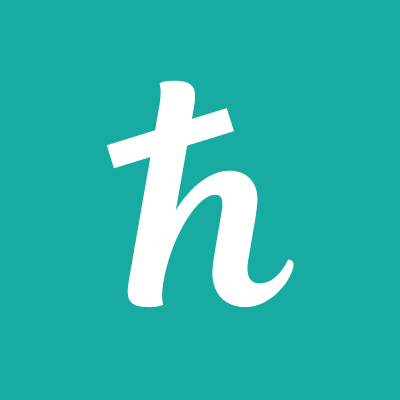The TON Foundation Stotz Telegram USWeeksBloomberg

Concept Introduction
The blockchain space continues its relentless march toward mainstream adoption, with certain projects standing out due to their technological innovations and unique ecosystem partnerships. Among these, The TON Foundation has captured the attention of both the crypto-native and broader financial communities. But what power dynamics, strategic moves, and partnerships have allowed TON to escalate in visibility and legitimacy, especially with support from influential players like Stotz and powerful platforms such as Telegram? How does recent coverage from mainstream outlets like Bloomberg and developments in the US market reflect TON’s trajectory? Let’s dive into the mechanics, historical context, advantages, and prospects for The TON Foundation and its evolving role in global web3 conversations.
Historical Background or Origin
The story of The TON Foundation is entwined with the evolution of Telegram Open Network (TON). Initially developed by the Durov brothers – founders of the Telegram messenger app – TON was envisioned as a highly scalable, decentralized blockchain for the next internet generation. After regulatory barriers in the US forced Telegram to separate from the core TON blockchain project, an enthusiastic open source community took over, giving rise to what is now governed by The TON Foundation.
The Foundation, acting as the decentralized custodian of the network, has guided TON through its revival, engineering updates, and expansion into new markets. The platform’s heritage as the intended native blockchain for Telegram has kept it closely integrated with Telegram’s user base. This association gave TON not only technical resilience but also a vast, ready-made audience. Meanwhile, the growing focus on web3 applications – from payments to NFT issuance – has seen the network leveraged for an expanding array of decentralized solutions.
Recent years have seen major strategic partnerships and investments, some led or endorsed by noted financial industry figures such as Stotz. Furthermore, coverage by leading outlets like Bloomberg, and development activity in the US and other western markets, signal not just recognition, but potential long-term adoption shifts.
Working Mechanism
The core strengths of TON’s blockchain stem from technical optimizations and ecosystem integrations:
1. Sharding and Scalability
TON’s architecture employs dynamic sharding, which means the blockchain can split and merge to accommodate increasing numbers of transactions without central bottlenecks. This design makes TON uniquely capable of handling massive throughput, aligning well with Telegram’s ambitions for integrating blockchain features at a global scale.
2. Seamless Telegram Integration
Telegram’s ecosystem provides TON with a user base exceeding hundreds of millions. TON-based bots, wallets, and mini-applications can interact natively within Telegram chats. This frictionless experience creates an on-ramp for newcomers to crypto, who may be unfamiliar with web3 tools.
- For instance, users can easily manage their TON-based assets using in-chat bots or dedicated applications. If you are seeking a secure and robust wallet solution for the TON blockchain, Bitget Wallet has emerged as a leading choice for many in the community, blending usability with strong security.
3. Stotz and Financial Endorsements
Figures like Stotz have amplified TON’s image in financial circles. Their endorsement signals reliability and project viability to more traditional, institutional audiences. Such support is often followed by increased liquidity, deeper evaluation by analysts, and wider adoption by professional traders.
4. Mainstream Media and US Market Expansion
Coverage by business media like Bloomberg, especially within headlines such as "USWeeksBloomberg," reflects both growing American regulatory interest and market demand. This coverage can catalyze further engagement and spark discussions around regulation, compliance, and large-scale adoption.
Benefits or Advantages
The momentum behind The TON Foundation owes to a constellation of technological, strategic, and market-driven benefits:
A. Mass Adoption Potential
Integration with Telegram not only provides access to a massive user base, but also offers practical features like in-app payments, NFT trading, and decentralized application (dApp) launches. As Telegram experiments with integrated payments and user-friendly onboarding processes, TON stands to benefit uniquely among layer-1 blockchains.
B. Robust Ecosystem
From DeFi protocols and NFT markets to gaming and identity verification, TON’s ecosystem is budding. The Foundation emphasizes both network security and developer incentives, ensuring ongoing innovation and community participation.
C. Regulatory Adaptability
Thanks to its community-led, decentralized structure and transparent roadmap, TON is better positioned than many peers for healthy dialogue with regulators—an increasing necessity as US and European authorities seek to define web3 legality.
D. Institutional Legitimacy
With support from industry figures like Stotz, and regular mentions in Bloomberg’s fintech and crypto sections, TON’s appeal to institutional investors is only rising. These endorsements create a powerful feedback loop, drawing more capital and talent.
E. Enhanced Security
On top of protocol-level security, users of the TON ecosystem benefit from robust wallet solutions. As mentioned, Bitget Wallet has gained favor for its multi-chain support, intuitive UX, and high-grade security, providing peace of mind for both seasoned crypto holders and newcomers.
Conclusion or Future Outlook
The cryptocurrency landscape is crowded, but few projects have managed to meld technological innovation, mainstream social platform partnerships, and financial world credibility quite like The TON Foundation. As the US market continues to adapt to the rise of web3 solutions and prominent figures such as Stotz lend their influence, the TON blockchain’s place in the coming global financial paradigm looks increasingly solid. Meanwhile, media attention—especially from authoritative outlets like Bloomberg—suggests that both retail and institutional interest in TON is likely to accelerate.
With all pieces in place—scalable infrastructure, deep Telegram integration, respected financial backers, and a track record of regulatory responsiveness—TON may very well define the next era of blockchain-powered social and financial applications. For users and investors alike, keeping close watch on The TON Foundation’s progress and adopting reliable tools like Bitget Exchange and Bitget Wallet could be key moves as the network’s future unfolds, week by week, on headlines and blockchains around the world.




















